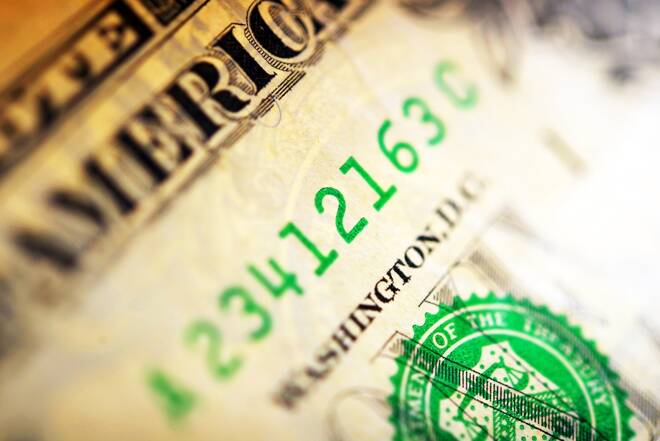Advertisement
Advertisement
The Weekly Wrap – Nonfarm Payrolls Delivers Dollar Strength
By:
Monetary policy divergence saw the Yen slide against the Greenback, which took the upper hand on nonfarm payrolls and hawkish FOMC member chatter.
The Stats
It was a busy week on the economic calendar for the week ending June 3, 2022.
A total of 77 stats were monitored, following 46 stats in the week prior.
Of the 77 stats, 39 beat forecasts, with 29 economic indicators falling short of forecast. Nine stats were in line with forecasts.
Looking at the numbers, 34 of the stats reflected an upward trend. Of the remaining 43 stats, 39 stats were weaker.
Out of the US
In the first half of the week, consumer confidence and manufacturing PMI numbers delivered Dollar support.
The CB Consumer Confidence Index fell from 108.6 to 106.4, while the ISM Manufacturing PMI rose from 55.4 to 56.1. Economists forecast the CB Consumer Confidence Index to fall to 103.9.
On Thursday, ADP nonfarm employment change figures disappointed ahead of the all-important NFP numbers on Friday.
Nonfarm payrolls increased by 390k in May, following a 436k jump in April. Despite the increase, the unemployment rate held steady at 3.6% due to a pickup in the participation rate from 62.2% to 62.3%.
In the week ending June 3, 2022, the Dollar Spot Index rose by 0.46% to end the week at 102.140. In the week prior, the Index slid by 1.44% to 101.668.
Out of the UK
Economic data was limited to finalized manufacturing PMI numbers for May, which had a muted impact on the Pound.
In line with prelim, the manufacturing PMI fell from 55.8 to 54.6.
In the week, the Pound slid by 1.13% to end the week at $1.2488. The Pound rose by 1.21% to $1.2631 in the week prior.
The FTSE100 ended the week down 0.69%, partially reversing a 2.65% rally from the previous week.
Out of the Eurozone
It was a particularly busy week on the Eurozone economic calendar.
Key stats included private sector PMI and inflation figures for member states and the Eurozone.
A pickup in inflationary pressure, according to prelim figures for May, delivered EUR support.
The Eurozone’s annual rate of inflation accelerated from 7.4% to 8.1%.
Private sector PMIs disappointed, however.
In May, the Eurozone’s manufacturing PMI fell from 55.5 to 54.6, with the services PMI down from 57.7 to 56.1. As a result, the composite PMI slipped from 55.8 to 54.9.
On the monetary policy front, bets of a move away from negative rates delivered EUR support, however.
For the week, the EUR slipped by 0.15% to $1.0719. In the previous week, the EUR rallied by 1.62% to $1.0735.
The EuroStoxx600 fell by 0.87%, with the CAC40 and the DAX seeing losses of 0.47% and 0.01%, respectively.
For the Loonie
GDP numbers for March and the first quarter were the key stats of the week. It was a mixed set of numbers, with the economy growing at a slower pace at the end of the quarter.
Quarter-on-quarter, the economy grew by 0.8% after expanding by 1.6% in the fourth quarter.
While the GDP numbers were Loonie negative, the Bank of Canada delivered the support with a 50-basis point rate hike.
In the week ending June 3, the Loonie rose by 1.02 to C$1.2594 against the greenback. The Loonie rose by 0.90% to C$1.27240in the week prior.
Elsewhere
It was a mixed week for the Aussie Dollar and the Kiwi Dollar.
The Aussie Dollar rose by 0.63% to $0.7207, while the Kiwi Dollar slipped by 0.34% to end the week at $0.6510.
For the Aussie Dollar
GDP, retail sales, and trade data were in focus.
It was a mixed set of numbers, with GDP and retail sales figures Aussie Dollar negative.
In the first quarter, the economy grew by 0.8%, weaker than the 3.4% growth in the fourth quarter.
Retail sales rose by 0.9% in April, following a 1.6% increase in March.
Aussie Dollar positive was a widening of the trade surplus.
In April, the trade surplus widened from A$9.314bn to A$10.459bn.
Other stats included building approvals, manufacturing sector data, company gross operating profit, and current account numbers that had a muted impact on the Aussie Dollar.
For the Kiwi Dollar
Business confidence and building consent numbers delivered little support.
In April, building consents slid by 8.5%, reversing a 6.2% rise in March.
Business confidence waned in May, with the ANZ Business Confidence Index falling from -42 to -55.
For the Japanese Yen
Industrial production and retail sales figures delivered mixed results.
According to prelim figures, industrial production fell by 1.3% in April, reversing a 0.3% increase in March. The fall affirmed the Bank of Japan’s concerns over the effect of the Ukraine war and China’s lockdown measures on the economy.
Retail sales increased by 2.9% in April year-on-year, up from 0.70% in March.
Service sector activity also improved, with the services PMI rising from 50.7 to 52.6.
The Japanese Yen slid by 2.96% to end the week at ¥130.88 against the dollar. In the week prior, the Yen ended the week up 0.59% to ¥127.12.
Out of China
Private sector PMIs drew market interest in the week.
The NBS manufacturing PMI increased from 47.4 to 49.6, with the services PMI up from 41.9 to 47.8.
The all-important Caixin manufacturing PMI rose from 46.0 to 48.1.
In the week ending June 3, the Chinese Yuan rose by 0.58% to CNY6.6603. The Yuan slipped by 0.10% to CNY6.6994 in the week prior.
The Hang Seng Index and the CSI300 ended the week up by 1.86% and by 2.21%, respectively.
About the Author
Bob Masonauthor
With over 28 years of experience in the financial industry, Bob has worked with various global rating agencies and multinational banks. Currently he is covering currencies, commodities, alternative asset classes and global equities, focusing mostly on European and Asian markets.
Advertisement
